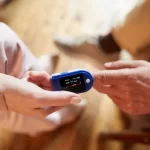Key Points
- Medicaid often covers breast pumps, but exact rules differ by state.
- Coverage may include manual or electric pumps, with some limits on timing or eligibility.
- Documentation such as a prescription is often required.
- Parents must use Medicaid-approved suppliers to avoid delays or denials.
- Access to pumps improves breastfeeding outcomes, with long-term health and economic benefits.
A Hidden Barrier for New Parents
Nearly half of all births in the United States are covered by Medicaid [1]. Yet for many new parents, figuring out how to access a breast pump through Medicaid can be surprisingly complex. While federal law requires most insurance plans to cover breastfeeding support, the fine print is often left to individual states. That means the rules—what type of pump you can get, when you can get it, and how—can look very different depending on where you live.
For parents already juggling doctor visits, newborn care, and financial stress, delays or confusion in getting a pump can make the difference between sticking with breastfeeding or stopping earlier than planned. That’s why understanding your rights under Medicaid is so important.
Why Breast Pump Coverage Matters
Breastfeeding has well-documented benefits. Infants who are breastfed have lower risks of infections, asthma, and obesity, while mothers see reduced risks of heart problems and certain cancers [2]. A breast pump helps make breastfeeding possible for parents who return to work, have a baby in the neonatal intensive care unit, or struggle with milk supply.
From a public health perspective, breastfeeding saves healthcare costs. Studies estimate that higher breastfeeding rates could save the U.S. billions of dollars annually in medical costs and productivity losses [3]. Medicaid coverage of breast pumps is a small but critical investment in healthier outcomes.
The Patchwork of State Policies
While the Affordable Care Act established breastfeeding support as a preventive service, Medicaid is jointly run by federal and state governments. This leads to wide variation in coverage rules:
- Manual Pumps: Often covered, sometimes without documentation.
- Electric Pumps: More limited; many states require a prescription from a health professional, proof of return to work, or a medical need.
- Hospital-Grade Pumps: Typically available only for short-term rental and only if medically necessary (such as a premature infant or user health complication).
For example:
- New York Medicaid covers both manual and double-electric pumps, but requires a prescription [4].
- Texas Medicaid usually covers only manual pumps unless a health professional certifies medical need [5].
- California Medicaid (Medi-Cal) allows coverage of electric pumps, but parents must work with approved suppliers, and processing can take several weeks [6].
This patchwork means two parents with identical circumstances may have completely different experiences depending on their state.
Common Challenges Parents Face
- Timing of Access: In many states, pumps can only be obtained after birth. That creates a gap during the critical first days of breastfeeding, when early pumping support can help establish milk supply.
- Documentation Hurdles: Many programs require prescriptions or proof of medical necessity, which can delay access if paperwork isn’t submitted correctly.
- Supplier Restrictions: Medicaid often contracts with specific durable medical equipment suppliers. Ordering from a non-approved vendor may lead to denials or unexpected bills.
- Awareness Gap: Some parents don’t realize they are eligible for a covered pump, leading them to pay out of pocket unnecessarily.
How to Navigate Medicaid Breast Pump Coverage
While the process varies by state, these steps can help:
- Check Your State’s Medicaid Website: Most states publish benefit details under “maternal health” or “durable medical equipment.”
- Ask Your Health Professional Early: Even if your state requires postpartum access, getting the prescription ready during pregnancy can reduce delays.
- Confirm Approved Suppliers: Call Medicaid or your managed care plan to find out which suppliers are authorized.
- Apply in the Third Trimester (if allowed): Some states permit pump requests before delivery so equipment is ready at birth.
- Document Everything: Keep copies of prescriptions, forms, and correspondence in case of denials or delays.
- Appeal if Denied: Parents have the right to request reconsideration. Often, denials are overturned when additional documentation is provided.
The Broader Benefits of Access
When parents receive timely access to pumps, breastfeeding rates improve. This not only benefits infants and families but also reduces strain on the healthcare system. For example, researchers have found that increasing breastfeeding support among Medicaid users can reduce disparities in infant health outcomes [7].
Moreover, access to pumps supports working parents—especially mothers—who need flexibility to maintain breastfeeding after maternity leave. Without coverage, the cost of an electric pump (typically $150–$300) can be prohibitive.
Real-World Example: The Difference Between States
Consider two new parents: one in New York and one in Texas. The New York parent can secure a double-electric pump with a prescription before leaving the hospital. The Texas parent, however, is limited to a manual pump unless her health professional documents a medical necessity for an electric version. Both parents are on Medicaid, both want to breastfeed, yet their access to equipment looks very different.
This illustrates why awareness and preparation are key. Knowing the requirements in your state—and starting early—can prevent last-minute stress.
Taking Action: Ensuring You Get the Support You Need
If you are expecting and covered by Medicaid, you can set yourself up for success:
- Call your Medicaid office or managed care plan now to ask about pump coverage rules.
- Speak with your health professional about writing a prescription.
- Contact approved suppliers early to confirm what paperwork they require.
- Reach out to local breastfeeding support organizations—such as WIC (Women, Infants, and Children program)—for guidance.
By being proactive, parents can avoid unnecessary delays and ensure they have the tools to start their breastfeeding journey with confidence.
Final Word: Breast Pump Coverage Is Essential, Not Optional
Breast pump coverage under Medicaid is not always straightforward, but with preparation, families can navigate the system successfully. Access to a pump is more than a convenience—it’s a critical tool for infant health, parent well-being, and long-term cost savings.
The article does not in any way constitute as medical advice. Please seek consultation with a licensed medical professional before starting any treatment. This website may receive commissions from the links or products mentioned in this article.
Subscribe for Free for more insightful health articles tailored to your needs.
Sources
- Medicaid and CHIP Payment and Access Commission (MACPAC). (2023). Medicaid’s role in maternity care. https://www.macpac.gov
- Centers for Disease Control and Prevention (CDC). (2022). Breastfeeding benefits both babies and mothers. https://www.cdc.gov
- Bartick, M., & Reinhold, A. (2010). The burden of suboptimal breastfeeding in the United States: A pediatric cost analysis. Pediatrics, 125(5), e1048–e1056.
- New York State Department of Health. (2023). Breastfeeding support and Medicaid coverage. https://www.health.ny.gov
- Texas Health and Human Services. (2023). Medicaid benefits for mothers and children. https://www.hhs.texas.gov
- California Department of Health Care Services (DHCS). (2023). Medi-Cal durable medical equipment guidelines. https://www.dhcs.ca.gov
- Whipps, M. D. M., Yoshikawa, H., & Godfrey, E. M. (2019). Effects of state-level breastfeeding support on disparities in breastfeeding duration. Maternal and Child Health Journal, 23(7), 873–881.




